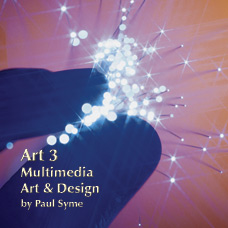Multi-Media Art and Design (MMAD) is a course where students explore a range of media, techniques, ideas, and issues that are relevant to art making and analysis in a digital age.
All students bring to the classroom divergent traditions, ideas, aesthetic experiences, and intuitions. We share a society that is inundated with imagery that will, at the very least, passively inform our aesthetic and social sensibilities. The electronic media of our day not only gives us more control over the visual and literal information we experience, it offers us the opportunity to contribute information, ideas, and aesthetic works. To be empowered in this media culture students need to learn how to share their ideas through digital media in a way that is coherent and engaging. MMAD proposes to offer students to conceptual, aesthetic, and technological skills they will need to critically and effectively engage their visual culture. MMAD aims to offer students a course that is informative, experiential, and meaningful to all learners.
MMAD can be taught by teachers with a range of technological abilities. It would be to the teacher’s advantage to be skilled in Adobe Photoshop & InDesign as well as Macromedia Fireworks & Dreamweaver, though the teacher who is new to these technologies can have a very rewarding experience. This course is designed so that much of the technology training is self-directed. Students use tutorials and a project to learn a piece of software. If the teacher were to complete the tutorials and the relative project for themselves before students, he/she would be able to coach students as they engage the tutorials and project. Further, these teachers would do so with an intimate understanding of the stumbling blocks students may trip over. The teacher could be able to soften or help students avoid the fall.Through the coaching of an attentive teacher, this course leads students to gain strong technical design capacities. More so, this course offers students new skills and processes in exploring and developing aesthetic ideas. Afterall, the best designs are the product of an idea more than a product of a technology.
FORMAT:
This course is divided into six sequential units: Foundations in Art and Design; Art History Through Your Eyes (Photoshop); Digital Portfolio1; Media Power Project; Elective Project; and Digital Portfolio 2. In addition to these units, students will need to maintain a drawing practice in their personal sketchbook.
During the Foundations of Art and Design unit, students will not be using digital media. In this unit students will be reviewing design principles, enhancing drawing skills, applying a Logic of Invention in the creation of a font design, and personalize their sketchbook cover through collage.
The Art History Through Your Eyes project leads students to study masterful artworks from art history and to gain proficiency with Adobe Photoshop. To experience and effect how contexts impact meaning in art, students will use Photoshop to include an image of themselves into a select work from art history. This project will be handed in through a web page format, introducing students to a WYSIWYG web design tool.
The Digital Portfolio is a project that students will begin mid-course and complete by course end. Students begin this project mid-term as an introduction to web design. Students are given until the end of term to complete the project to allow their ideas and designs to brew and evolve while also providing time for students to create more portfolio content.
Students gain media awareness and more electronic media skills in the Media Power Project. This project includes an essay component where a published advertisement is critiqued; and a communication design component where students produce their own print, video, or web based advertisement.
Recognizing the divergent interests of students in a given class, the Elective Project frees students to use a self-selected theme to create a work in a medium of their own choice. Students may choose a medium that they have yet to learn or experience or one that they want to gain mastery over.
Complete Teacher Manual and Student Book – pricing below
Become Highly Qualified in this subject when approved through your school district with credit toward recertification . Click Contact for details in reply.
Table of Contents
| 1. Fundamentals of Art and Design |
4. Digital Portfolios (web design) |
| 2. Drawing |
5. Media Power (videography and/or print design) |
| 3. Art History Through your Eyes – exploring digital image manipulation |
6. Elective project (videography and/or print design) |




